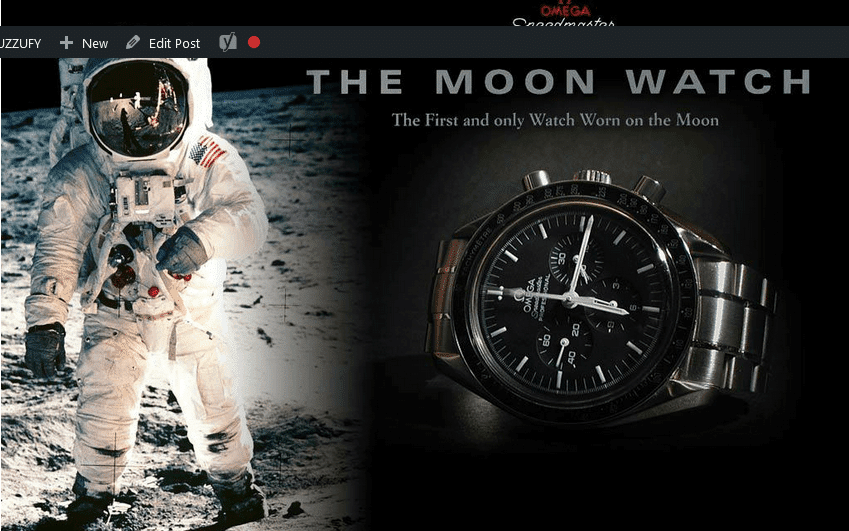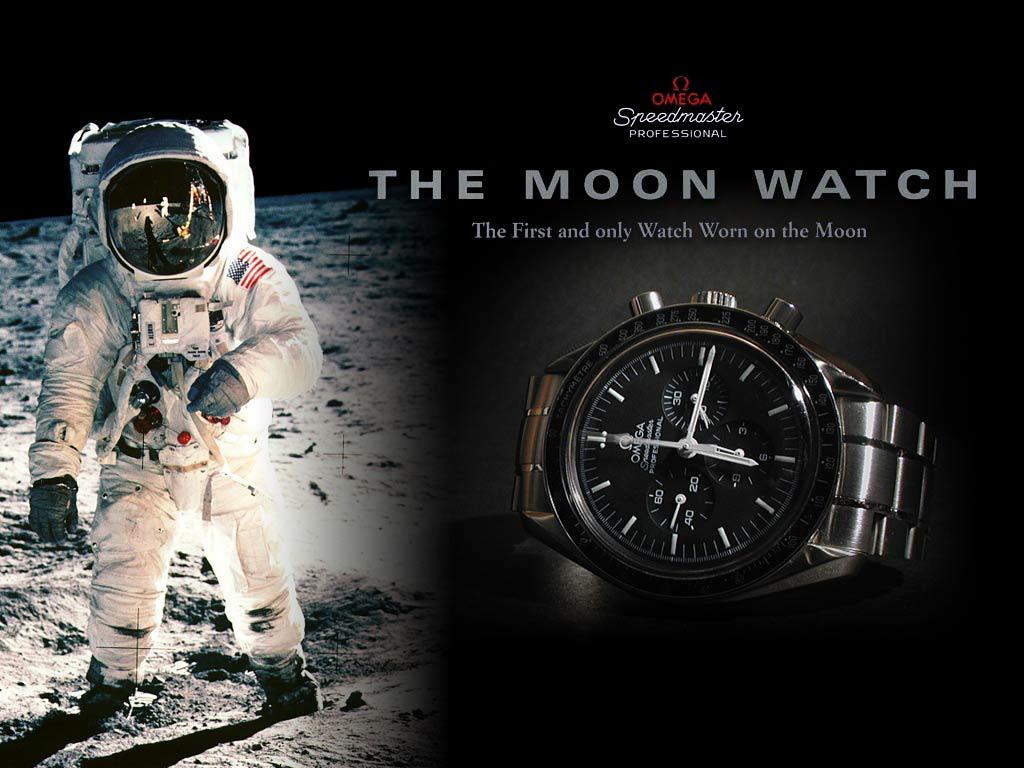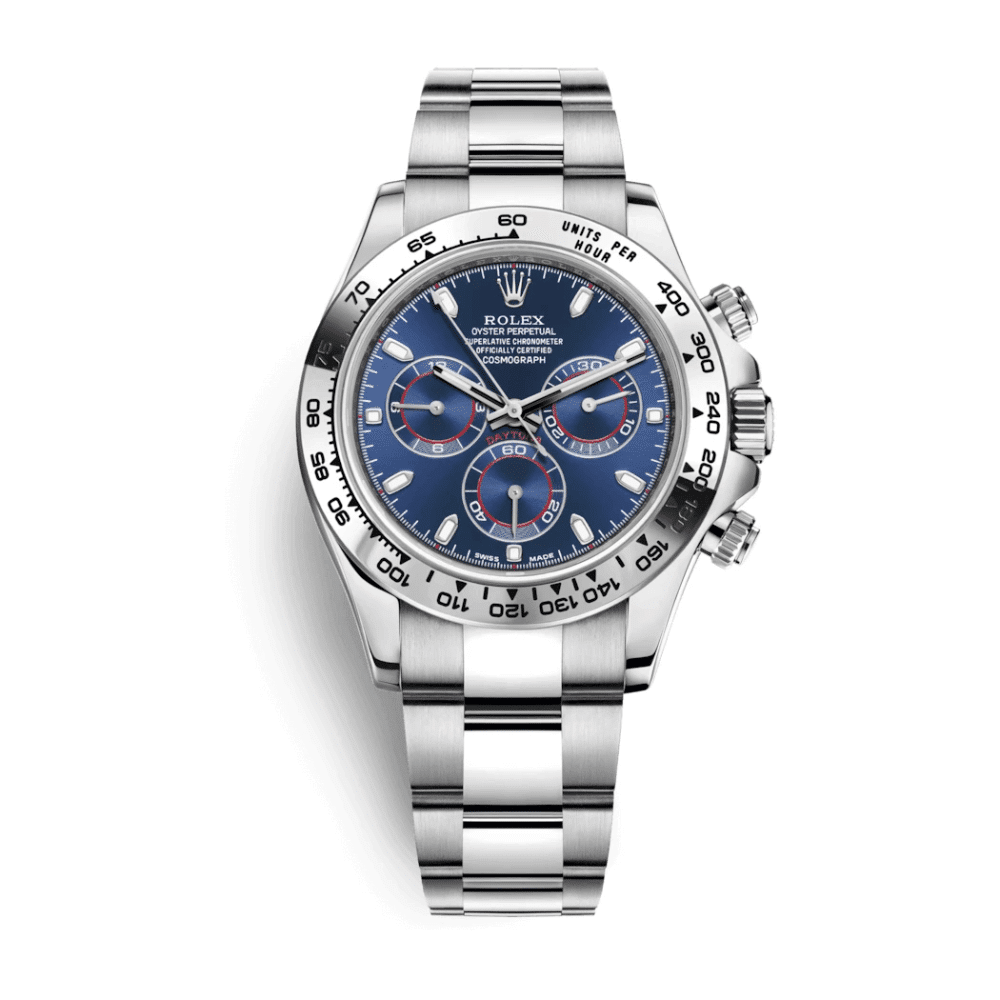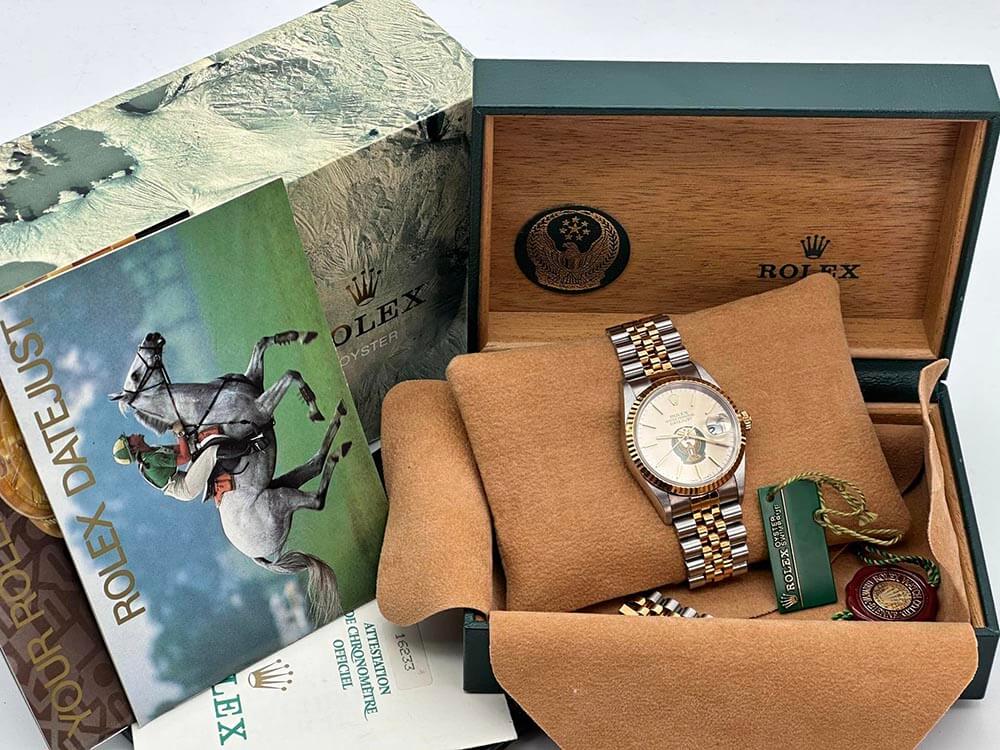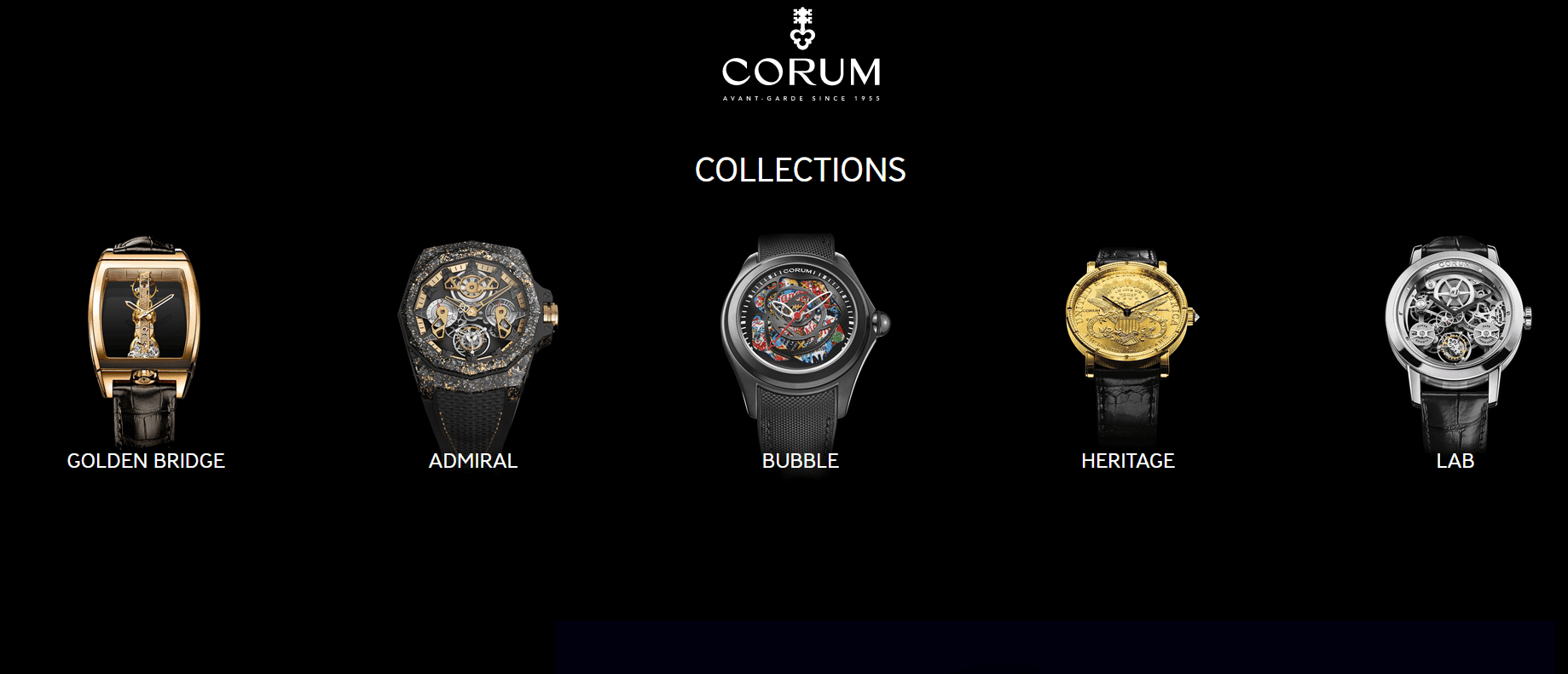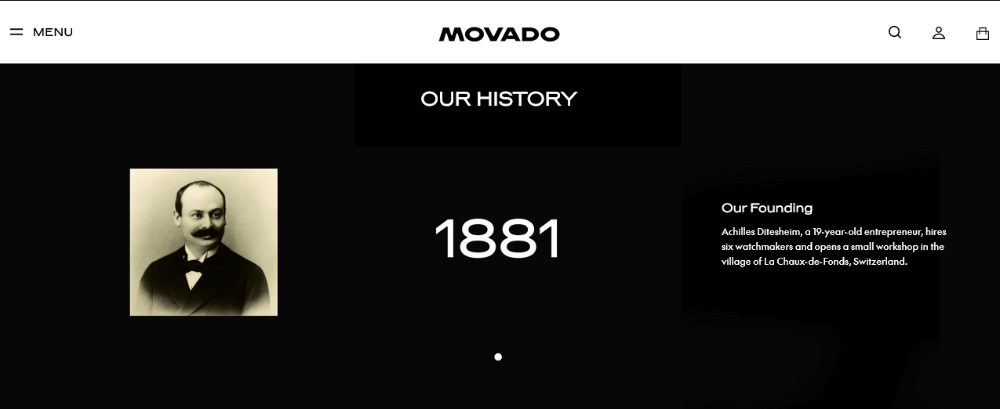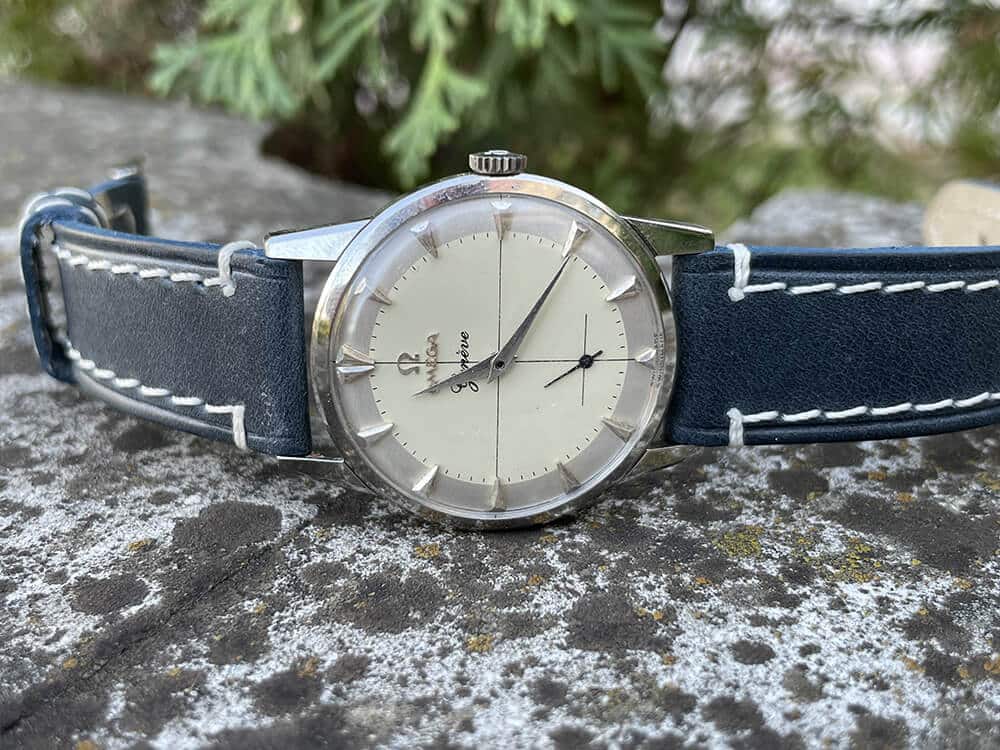Аmerica’s first
manned space missions
began with
Project Mercury, established
on Oct. 7,
1958. The astronauts
aboard Mercury spacecraft wore their
own personal wristwatches. Some of
these were Omega Speedmasters.
In his address to Congress on May
25, 1961, President Kennedy urged the
country to land a man on the moon and
return him safely to Earth before the end
of the decade. In pursuit of this goal, the
National Aeronautics and Space Administration
(NASA) announced a plan in
December of that year to extend Project
Mercury to develop a two-man spacecraft.
This new program was named
Gemini.
Astronaut Walter Schirra was wearing
his own Speedmaster when he and
his Sigma 7 Mercury spacecraft orbited
the Earth six times on Oct. 3, 1962, a
flight lasting 9 hours and 15 minutes.
NASA decided to make astronauts’
wristwatches part of their equipment for
Project Gemini and for the subsequent
Apollo program, and thus for the moon
landing. The agency commissioned
James H. Ragan, a NASA aerospace engineer
and flight hardware expert, to
write a list of specs, test potential watches
and purchase the winning models. The
watch would have to be a chronograph,
and an official call for candidates was issued.
In addition to Omega, other entrants
were Longines, Wittnauer and
Rolex. All models were tested under zero
gravity, extreme pressure variations,
bone-jarring vibrations, and temperatures
ranging from -18 to +93 degrees
Celsius. The watches were also tested by
astronauts aboard a Gemini space flight.
The Speedmaster outperformed all
the other watches in both test series.
The
watch was officially designated as
“flight-qualified by NASA for all
manned space missions” on March 1,
1965. NASA bought an initial group of
15 to 20 Speedmaster watches from
Omega. Unlike almost all other Apollo
equipment, the watch was not manufactured for use specifically by NASA or for
use in space but was available in retail
outlets in the U.S.
The first Speedmaster models flew into
space three weeks later on the wrists
of astronauts Virgil “Gus” Grissom and
John Young as official equipment aboard
Gemini 3. This was the first official trip
for the chronograph although it had already
flown in space twice on Project
Mercury missions.
The real test for the Speedmaster
came on June 3, 1965, during the Gemini
4 mission, when astronaut Edward H.
White wore the chronograph over the
sleeve of his spacesuit for a spacewalk.
The environment in outer space is as
harsh as any a watch will encounter anywhere.
Near-vacuum conditions and extreme
temperatures prevail. The temperature
on the side of the ship exposed to
the sun climbs to about 100 C and plummets
on the other side to approximately
–100 C. In anticipation of these rigors,
Omega developed prototypes with red
anodized aluminum cases for protection
from extreme temperature variations
and dials coated with zinc oxide to provide
the highest resistance to solar radiation.
But these prototypes turned out to
be unnecessary because the Speedmaster
withstood the extreme temperatures
without any modifications.
Omega added the word “Professional”
to the Speedmaster’s dial in 1965 and
highlighted the watch’s role in space exploration
in the brand’s advertising campaigns.
The race to put the first man on the moon was by then in full swing. The
USSR had led the U.S. in the space race
for several years. The first man-made object
to reach the lunar surface was the Soviet
Lunik 2 space probe, which accomplished
a planned crash landing in 1959.
On Feb. 3, 1966, the Soviets also completed
the first soft landing on the moon
with their Luna 9 spacecraft.
NEIL ARMSTRONG became the first
person to set foot on the moon at
2:56:20 GMT on July 21, 1969. The
electronic chronograph aboard the lunar
module had malfunctioned, so Armstrong
left his Speedmaster inside the
spacecraft. That’s why Edwin “Buzz”
Aldrin became the first man to wear the
Speedmaster on the moon when he left
the module 13 minutes later and joined
Armstrong on the lunar surface. The
Moonwatch was born! The fantastic
photos shot by the Apollo 11 astronauts
were transmitted to Earth and sent around the globe, and the Speedmaster
was clearly visible in many of these historic
images. The same Speedmaster
model accompanied other astronauts on
later lunar expeditions.
The Speedmaster played a decisive
role in assuring a safe return for the astronauts
aboard the now-famous Apollo
13 mission in April 1970. On the third
day after liftoff, one of the two oxygen
tanks aboard the spacecraft exploded.
The blast also damaged the second tank,
which was positioned next to the first.
Oxygen wasn’t needed only to allow the
crew to breathe, it was also essential for the fuel cells that produced the craft’s
electricity and water. A lunar landing
was out of the question now. The crew
was ordered to return to Earth as quickly
as possible. All systems were switched
to emergency fuel-saving status and electricity
was supplied only to those devices
essential for life. The spacecraft’s trajectory
was guided into an orbit around the
moon to gain a gravitational boost for
the return flight. But to put the craft on
the correct trajectory for a safe return into
the Earth’s atmosphere, the rockets
would have to be fired for a few seconds
while the spaceship was behind the moon
and out of radio contact with ground
control. The electronic clock aboard the
vessel had likewise been switched off to
conserve power, so the crew had to rely
on their Speedmaster for the all-important
14-second firing of the lunar module’s
descent propulsion system. A 10
percent error would have had fatal consequences:
the spaceship would have
missed Earth and continued into deep
space, never to return home. But the
Speedmaster performed impeccably and,
thanks to its precision, the three astronauts
returned safely to Earth.
The life-saving performance of the
Speedmaster was acknowledged by the
astronauts. In October 1970, Omega received
the Snoopy Award, an honor
NASA’s Astronauts Office confers on
employees and contractors who have
made especially important contributions
to the success of NASA missions. The certificate was autographed by the crew
of Apollo 13: James Lovell, Fred Haise
and Jack Swigert.
A competitor challenged the Speedmaster
in 1972, shortly before Apollo 17
lifted off for the last flight to the moon.
American watch manufacturer Bulova
was putting pressure on NASA to follow
the “Buy American Act,” which was intended
to promote American products.
Bulova achieved partial success by persuading
NASA to begin a new series of
tests in which 16 different chronographs
participated. In addition to the tests conducted
in 1964 and 1965, the watches
were also exposed to magnetic fields.
Once again, the Speedmaster was judged to be the most robust and the most precise,
and was chosen to continue serving
as NASA’s official wristwatch. This
meant it would be standard equipment
for the final lunar landing and all subsequent
manned activities in outer space.
Eugene Cernan, the last man to walk on
the moon, wore a Speedmaster. Furthermore,
Speedmaster chronographs were
strapped around the wrists of both the
American astronaut Tom Stafford (who
would later become chairman of Omega
USA) and the Soviet cosmonaut Alexei
Leonov during the historic Apollo-Soyuz
rendezvous in July 1975. This was the
first time cosmonauts also wore the
Speedmaster, which has been the official chronograph of Russian manned space
missions ever since.
A new era in space flight began when
the U.S. built a reusable spacecraft, the
space shuttle. For this new program,
nearly all of the supplier contracts were
in 1978 subjected to a call for new suppliers.
This included a search for new
watches: approximately 30 brands were
invited to submit their chronographs for
testing. In addition to the classic Speedmaster
Professional with hand-wound
caliber 861, Omega also sent a Speedmaster
125 (a self-winding mechanical
chronometer with a central elapsed-minutes
counter) and an electronic Speedsonic
with a tuning fork regulator. After four months of intensive testing, the winner
was chosen: once again, the handwound
Speedmaster Professional proved
to be the best among the tested watches.
Timekeeping by quartz watches deviated
too drastically in the extremely high and
low temperatures, and LCD displays
froze in the frigid cold. NASA purchased
56 Speedmaster Professional watches.
This model has remained the only wristwatch
authorized for astronauts to wear
during extra-vehicular activities.
THE SPEEDMASTER has been a part of
highly diverse missions, but the watch itself
has undergone very few changes
since its introduction in 1957. The first version had a steel-colored bezel with a
tachymeter scale, an arrowhead at the tip
of its hour hand and an acutely tapering
minutes hand. The designers’ goal was to
create an extremely legible dial, so the
tachymeter scale was on the bezel. Inside
the case ticked hand-wound caliber 321
with column-wheel control for its
chronograph functions. This movement
was based on caliber 27 CHRO C 12, the
brand’s first chronograph movement
with a counter for 12 elapsed hours,
which was designed in 1942. This caliber
was further developed by Albert Piguet
at Lémania in 1946, whose efforts led to
the creation of caliber 321. Omega had
acquired Lémania Lugrin in 1932. When
Omega introduced the Speedmaster in
1957, this caliber was still state of the art
and would remain so for many years.
The second version of the Speedmaster
debuted in 1959. It was equipped
with alpha hands and the characteristic
black tachymeter bezel. Astronaut Walter
Schirra wore this model in 1962 when
he made it the first Speedmaster to be
worn during extra-vehicular activity.
The third version of the Speedmaster
debuted in 1963. With it came the current
look, with baton hands for the hours and minutes and an arrowhead at the tip
of the central elapsed-seconds hand. The
asymmetrical case with raised right side
to protect the push-pieces was introduced
in 1963 and is still in use today,
but the symmetrical case was also manufactured
until 1966. As mentioned earlier,
the word “Professional” was added to
the Speedmaster’s dial in 1965.
On the back of the case is the seahorse
emblem that Omega uses on its
water-resistant watches. Only between
1969 and 1971 was this emblem temporarily
replaced by Omega’s logo, along
with the phrases “The first watch worn
on the moon” and “Flight-qualified by
NASA for all manned space missions.”
Omega later changed to the caseback design
that’s in use today, with the embossed
seahorse in the center and the two
phrases around the border.
The movement has undergone relatively
few changes over the years. Lémania
simplified caliber 321 and released it
as caliber 861 in 1968. Instead of a column
wheel, the simpler version relied on
a cam to control its chronograph functions.
It also had a smooth balance rather
than one with screws along its rim and
the balance’s frequency was increased from 18,000 vph to a more modern
speed of 21,600 vph. The Speedmaster
was modified to house this movement
the same year. Watches with the newer
caliber 861 can be recognized by the
printed Omega logo on their dials, which
replaced the applied logo. Several details
in the caliber were changed in 1996, and
the movement has been known as caliber
1861 ever since. Last year, Omega introduced
a new Speedmaster with an inhouse
movement, caliber 9300, which contains a co-axial escapement (see previous
article for a comparison between
this watch and the caliber 1861 model).
Although the watch’s design has varied
little over the decades − even the Plexiglas
crystal found on the original Speedmaster
is still used today − there have
been many variations and special models.
The Speedmaster Professional Mark
II, which had a tonneau-shaped case and
a hardened mineral crystal, was first
marketed in 1969. Omega introduced the first self-winding
Speedmaster Professional,
the Mark III, in 1971. A
very modern wristwatch for its
time, it had a date display, a central
hand to count elapsed minutes and an
additional 24-hour display. In 1973,
Omega launched a limited-edition
Speedmaster 125 that housed the same
movement as the Mark III but was
chronometer certified. This movement
also powered the Mark IV, introduced
the same year. Electronics were introduced
in 1974, when Omega launched
the Speedsonic f 300 Hz, with a tuningfork
movement. The Speedmaster
Quartz with LCD display came out in
1977. Different models of this watch
were built in subsequent years. A series
of Speedmaster Professional watches was
equipped with crystal backs for the first
time in 1980, and the numerical designation
“863” was given to the embellished
version of caliber 861.
The 1980s saw the debut of the Mark
V, a mechanical Speedmaster with a
rounded case. A model with a moonphase
display and a hand-type date in the
Professional line was also introduced
that decade. Omega further expanded
the Speedmaster family with a smaller
“Reduced” model with automatic movement,
the Broad Arrow, and the popular
Speedmaster Racing models, which were
created in collaboration with Michael
Schumacher, the seven-time Formula 1
world champion.
Although the hand-wound Speedmaster
Professional remains the only
wristwatch authorized for spacewalks,
new technology has made possible various functions that are important for
space travel. Omega collaborated with
astronauts to develop the quartz-controlled
Speedmaster X-33 multi-function
watch. Prototypes were tested by jet pilots
and by astronauts aboard the Mir
space station. With an analog-digital display,
this model, introduced in 1998, was
named for the planned successor to the
space shuttle, which was later canceled.
Like the Moonwatch, this timepiece is
“Flight-qualified by NASA for space
missions.” The phrase is engraved on the
back of the watch, which also has the
embossed seahorse emblem. One of the
important new functions for astronauts
is “mission elapsed time,” the number of
days, hours, minutes and seconds that
have elapsed since liftoff. This simplifies
timing for the astronauts because scheduling
for every experiment is expressed in
“mission elapsed time.” The alarm,
which rings at 80 decibels, is extremely
loud and can also be felt as vibrations on
the wrist.
